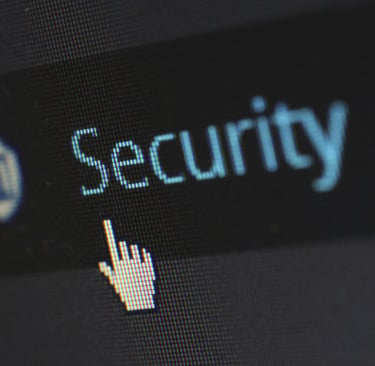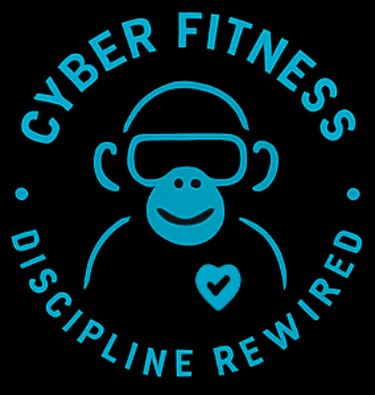Secure Your Devices At Home with the Essential Eight
Discover how to secure your devices at home and raise your digital awareness. Learn the Essential Eight strategies for safer online living with simple actions
DIGITAL


Most people think cyber security is something the IT guy at work deals with while sipping lukewarm coffee and looking stressed. And sure, he does, but here’s the part too many households skip: your home is just as vulnerable, just as exposed, and just as reliant on the same basic defences. Hackers don’t care whether you’re a company with 500 staff or a bloke sitting on the couch with a laptop, a phone, and a fridge that somehow needs a Wi-Fi connection. If it’s connected, it’s targetable. And if it’s targetable, it needs protection.
That’s where the Essential Eight comes in. It’s an Australian framework built by the Australian Cyber Security Centre (ACSC), designed originally for big workplaces but incredibly useful for normal people like us who just want our devices to stop acting like unlocked doors in a bad neighbourhood. The funny part is that the most important actions - the ones that actually save you from the bulk of online threats - aren’t even the complicated ones. They’re dead simple. They’re habits. They’re discipline. And if you’re reading this, you already know I’m big on discipline.
When you cook it down, four of the Essential Eight matter the most for households: patch your applications, patch your operating systems, turn on multi-factor authentication, and make backups like your digital life depends on it—because it does.
Patching is the boring part. No one likes updating anything. Those little notifications telling you to update – that’s all it is. Simple. The truth that no one wants to hear: the majority of hacks that cripple people and companies come from vulnerabilities with a patch (update) already available. A huge chunk of cyber incidents come from unpatched systems - holes the attackers walked through because someone ignored a pop-up. Microsoft reported a massive percentage of exploited vulnerabilities were already fixed; the fix just wasn’t installed. One researcher described unpatched systems as “leaving your front door open and assuming no one will try the handle.”
For home users, this is even more brutal because there’s no IT department forcing updates onto your machine. You’re it. The boss. The bouncer. The last line of defence. And all you have to do is hit “Update now” instead of “Remind me later.”
The other kind of patching - applications - matters just as much. Your phone apps, your laptop apps, your browser, your games - if it can run code, it can be exploited. Attackers love out-of-date software because it’s predictable. They can test the old version, learn how to break it, then go hunting for anyone still running it. The U.S. Cybersecurity & Infrastructure Security Agency (CISA) called unpatched applications one of the “top entry points” for home intrusions. Not advanced, not elite, not movie-level hacking - just basic exploitation of basic neglect.
Multi-factor authentication (MFA) is another Essential Eight strategy, and it’s possibly the single biggest upgrade you can make to your online life. Passwords alone aren’t enough anymore. They haven’t been for a long time. We use weak ones. We reuse them. We forget them and reset them over and over until half our accounts end up using a variation of the same phrase. Attackers know this and automate the hell out of it. But with MFA - those little codes on your phone, those authenticator apps, those prompts asking “Is this you?” - that’s another layer of security. Microsoft has publicly stated that MFA blocks 99% of automated attacks. Google found almost the same number in their research. That’s not a protective measure; that’s a force field.
People complain that it’s annoying. Maybe, but so is dealing with identity theft, bank fraud, or explaining to your kids why the family Netflix account is now streaming Russian soap operas. Mild inconvenience now or major disaster later – it’s your call. Once you get used to it, MFA just becomes part of logging in, like locking your car door out of habit.
Backups. Well. One day, shit will go sideways and a recent backup is going to come in handy. Not because you did something wrong, but because the universe always likes to throw a spanner into the works at the worst possible moment. Hard drives fail. Phones get dropped in toilets. Laptops get stolen. Ransomware hits everyday people just as often as businesses, and when it does, the attackers don’t care that you’re “just a home user”. If anything, they prefer it. You’re more likely to panic and pay.
A proper backup turns disaster into inconvenience. The ACSC recommends the 3-2-1 rule: three copies, two different media, one offsite. For a home user, this can be as simple as a cloud backup service (Google Drive, iCloud, OneDrive) plus a physical external hard drive you plug in once a week. It’s not complex. It’s just discipline. And future-you will thank present-you for not being an idiot.
Now, the other parts of the Essential Eight - restrict administrative privileges, application control, strict macro controls, user application hardening may use some unfamiliar terminology, but are absolutely as valuable for your cyber defences. User application hardening? That’s basically using your browser properly - disabling dodgy extensions, blocking pop-ups, turning on safe browsing. Restricting admin privileges? Application control? These are probably more applicable to the workplace. Basically, be the gatekeeper of what runs on your devices instead of clicking every flashy download button you see and not installing random apps from questionable corners of the internet.
The philosophy behind the Essential Eight, at its core, is about reducing your attack surface - the number of ways someone could break into your life. Same as fitness, same as mindset, same as every “discipline rewired” principle: small habits, repeated consistently, build massive resilience. You don’t need to become a cyber expert. You don’t need a tinfoil hat. You just need to do the simple things well and do them consistently.
And here’s the part I really want you to hear. Cyber security at home isn’t about paranoia. It’s about protecting your future, your family, your money, your identity, your memories - your entire online existence. That’s worth five minutes of your time a week.
Your online safety isn’t someone else’s job. It’s yours. And most of it is an easy fix.
Where to start?
If you’re wondering where to start, keep it stupidly simple. Right now - before you forget - update your phone, your laptop, your apps. Turn on MFA for your email, your bank, your social media, and anything else with a login. Set up cloud backups. Buy an external hard drive if you don’t have one. This weekend, spend an hour going through your household devices – the kids’ tablets, your partner’s phone (with their permission and supervision – let be respectful), the desktop computer gathering dust in the corner - and bring everything up to date. You don’t need expertise. You just need intention. You just need momentum. Small steps. Bite-sized chunks. Discipline, rewired.


